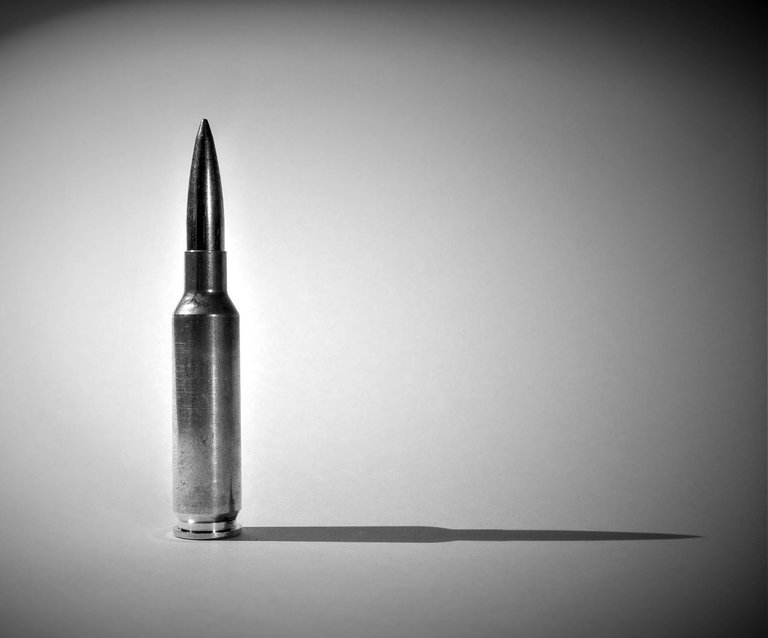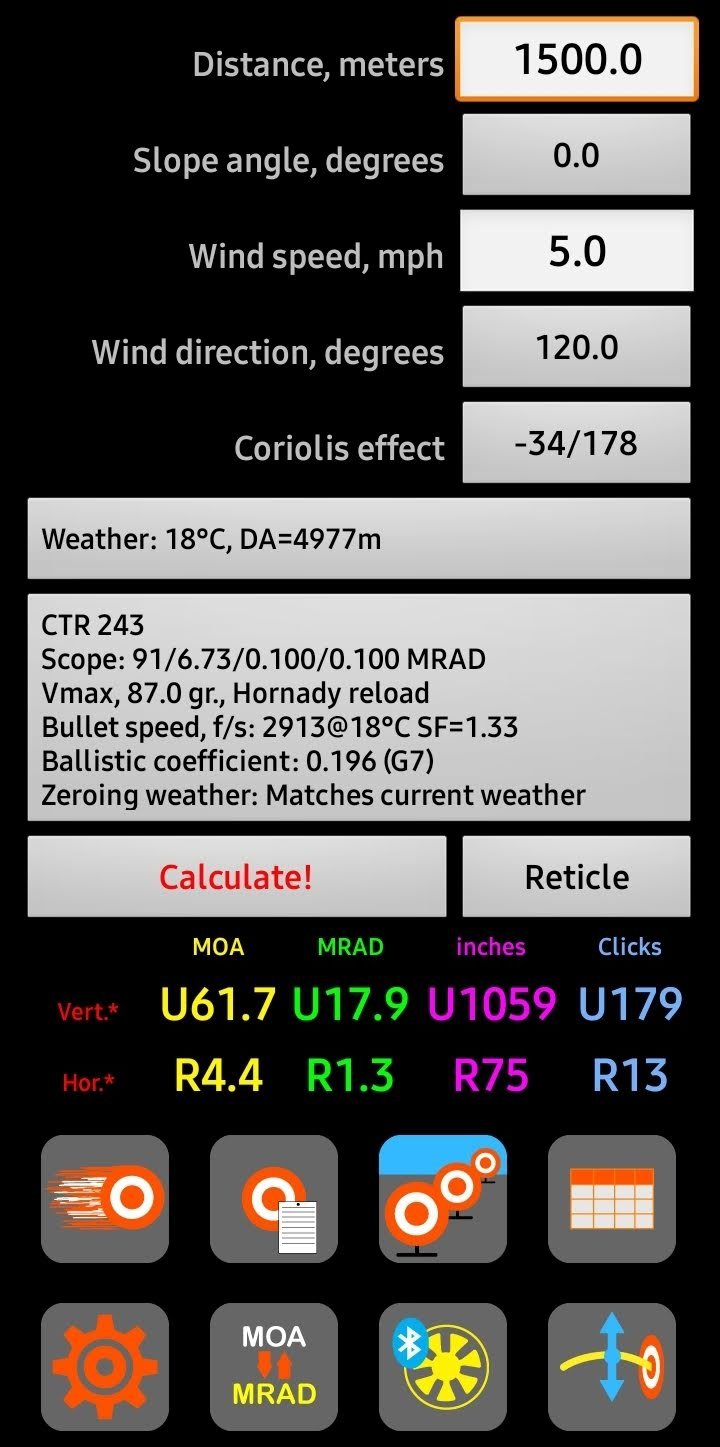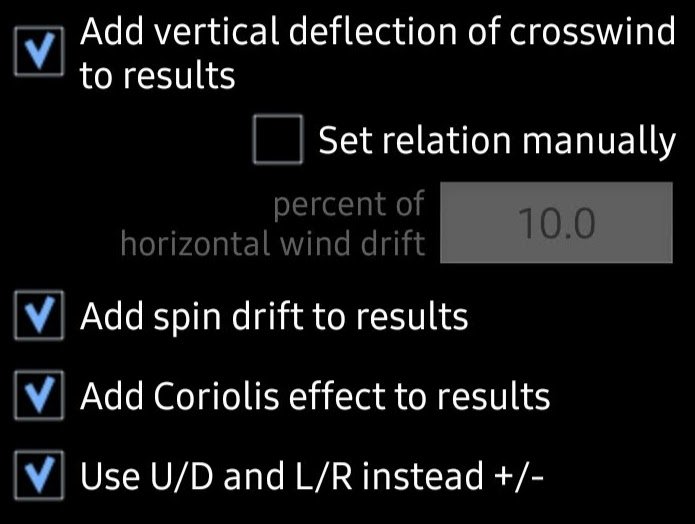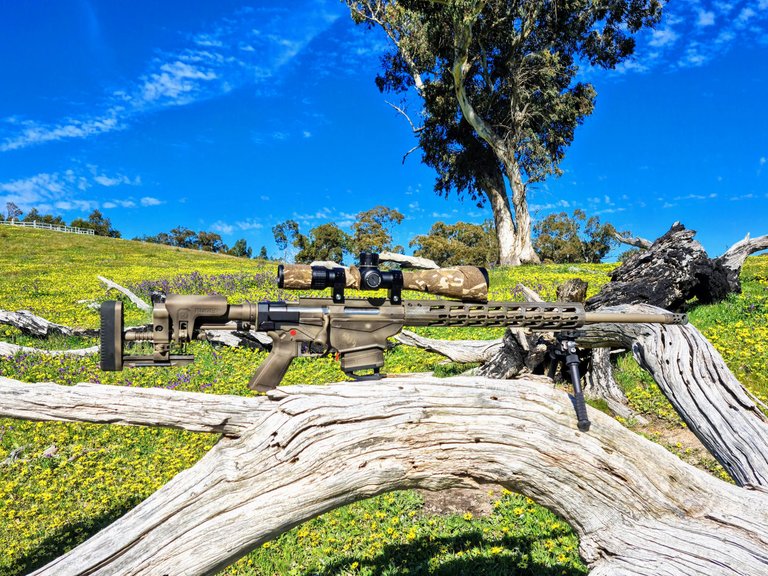Spin mitigation
Spiralling out of control isn't a very nice feeling - It happened earlier today and made me feel pretty bad on a day when I was already at a low-point...I couldn't control the spiral it just sort of spun faster and more off course second by second; It just got worse and is still there, out of control, and it still hurts pretty bad to be honest.
I've had some experience with spinning out of control in my time as a long range shooter, not from an emotional perspective though - You see bullets do it too and to land accurate rounds on-target from great distances the spiralling, let's call it spinning, needs to be controlled adjusted for. The alternative is inaccurate and ineffective fire and that is unacceptable when rounds on target matter.

Spin drift
In long range shooting we call spiralling out of control spin drift.
Spin drift causes a bullet to drift horizontally from the point of aim, in the same direction of the barrel-twist. Note: Rifle barrels are rifled to impart spin to the bullet as it travels the length of the barrel and when it exits at the muzzle that spin helps stabilise the bullet-flight making it more accurate.
It's simple physics. A right-hand-twist barrel will impart a right-hand spin and so the bullet will drift that way over distance. This is a negligible factor at close range, say 500 meters or under. I'll show you some figures further down to better demonstrate that as it changes over greater range plus the dramatic effects spin drift has.
It's an aerodynamic factor, the spin drift. Due to the spin the bullet will angle very slightly in the direction the bullet is rotating as it travels along its flight-path. Because the bullet is very slightly pointing right [right-twist scenario] due to the spin, and the trajectory of the bullet is an arc, the bullet tip is also forced very marginally to the right exposing more of the left side of the bullet to the atmosphere, the air. This exerts a greater aerodynamic force on that side of the bullet and the bullet is pushed off course to the right. Spin drift.
The amount of spin drift depends on several factors including the rate of spin, length of bullet, time in-flight and to some degree the air density, or density-altitude which is a figure determined by combining altitude, temperature and humidity into one single figure through a complex equation.
Mitigating the effects of spin drift
Long range shooting has become more of a science as time has passed. Guessing isn't much of a thing no matter how hard a person argues that they can; It certainly won't work in pressured situations where first-time impacts are required. Nothing is left to chance in those situations.
DOPE [data on previous engagements] is always gathered when a long range shoter practices and shoots in the field and they rely on it in the advent of technology failing however it's technology that generally gets rounds onto targets efficiently and effecively; Or at least provides the data to do so. I refer to ballistics solvers here and I personally use the StrelokPro solver which I have written about previously. It's available on the AppStore and PlayStore to download - But if you don't shoot long range don't waste your money.
Ballistics solvers gather a huge amount of data together, most of which is rifle and ammunition-specific plus the environmental factors like density-altitude, wind speed and direction, Coriolis effect, azimuth, slope-angle and so on, all determined by the shooter. Once the range is inserted the solver calculates various field firing solutions [FFS]. Below is the front page but behind that front page is many, many other details that are factored into it and are required for accurate solutions.

Below you can see I have selected spin drift so when I pull up a FFS I know the numbers are right - It's all about putting the right data in to get the right data out. That's how shots get placed on-target with accuracy...Along with knowing how to fucking shoot of course.

So, turn spin drift on in StrelokPro and let the magic happen. Here's some figures to pull it all together. Remember, we're talking about horizontal shift here, not elevation. Spin drift affects the bullet horizontally not vertically...Or only so very minutely vertically that it's not a factor. The below data is for my 1 in 10 right-twist .243 calibre rifle:
Example:
500 metres range with spin drift factored: R0.3 MRAD adjustment
500 metres range no spin drift factored: R0.4 MRAD adjustment
1000 metres range with spin drift factored: R0.7 MRAD adjustment
1000 metres range no spin drift factored: R0.9 MRAD adjustment
1300 metres range with spin drift factored: R1.0 MRAD adjustment
1300 metres range no spin drift factored: R1.3 MRAD adjustment
What does that mean? Great question, I'm glad I asked it of myself.
A milliradian [MRAD] is an International System of Units used for angular measurement. I'm not going to go into it here but essentially 1 MRAD at 100 metres is 10 centimetres so therefore 0.1 MRAD [1/10MRAD] at 100 metres is 1 centimetre.
Let's stick with the tenths for the purpose of this post as that's what the figures in the example allude to and it's easy to get one's head around.
- 0.1MRAD [1/10 MRAD] at 500 metres is 5 centimetres
- 0.1MRAD [1/10 MRAD] at 1000 metres is 10 centimetres
- 0.1MRAD [1/10 MRAD] at 1300 metres is 13 centimetres
So at 1000 meters not accounting for 0.1MRAD could result in missing the point of aim by 10 centimetres savvy? I hope this all makes sense to you.

Let's bring it together
Now, lets' get back to that example about using 1000 meters as the range.
- 1000 metres range with spin drift factored: R0.7 MRAD adjustment
- 1000 metres range no spin drift factored: R0.9 MRAD adjustment
Above you can see a right adjustment of 0.7 and 0.9 respectively the former with spin drift factored for and the latter without. Based on what we know about MRAD that's a 0.2MRAD difference which, at 1000 metres equates to 20 centimetres - That's a huge miss y'all. That's an ineffective shot and when shots have to count...Nope, it's not legit.
I say it all the time...Long range shooting is a science; Sure, there's physical attributes as well considering that any small error will bring great margin of error downrange, especially so as the range gets greater or the environmental factors change. It's something that requires great skill and a lot of knowledge and understanding. For me it's all of those challenges combined that makes it so enjoyable and attractive an activity.
Long range shooting tests so many aspects from rifle-system set up, personal shooting-skills, problem-solving, intelligence and of course the equipment itself. It's ever-changing as every time one shoots conditions could be vastly different and adjustments required.
I hope you found something of interest here as you looked at the pictures or scanned a paragraph or two...And if you happened to read the post and have questions please feel free to drop them in the comments, I'll be happy to answer to the best of my knowledge - I'm a knucklehead though so might not have all the answers.
Design and create your ideal life, don't live it by default - Tomorrow isn't promised so be humble and kind
Discord: galenkp#9209
You like danger he, falling from roofs, and shooting , man living life on the wild side,
The oldest and hubby shoot aswell, not long range with that long beast like you showed in the picture though
Well, the falling from the roof thing was more a bid to fly. I just figured it might give me true motivarionnto as actually take flight. It did not though.
Anyway, I've been a shooter for 30 years so yeah...A bit. I didn't know your husband and eldest were shooters too. We have that in common it seems. :)
Yes they are , but now with Covid all is not possible , it’s a thing where they feel they are one with their focus so it’s needed to re open the range soon
I hope their range opens soon.
I shoot at a range also however am very lucky to have a few other private properties to shoot on so there's always a chance to get behind the gun.
Great overview. I'm a total convert to MRAD scopes nowadays vs. the MOA. It just makes the math so much simpler! I do like the look of that rifle! I know it's a shooter!
Yeah, I went from MOA to MRAD a while ago for the same reason...So much easier! And yep, that rifle is a laser. 😉
Lot more to shooting long distance than good eyes and a steady hand ... being a math major would help.. ha ha
Yeah, it's a bit like that...It's teachable though...I can hardly do my own shoelaces up and I managed to learn so yeah, anyone can do it.
yeah its def interesting all the figuring out needed to shoot long distances. I always thought once i got my grampas rifle that i wanted to start shooting long distances. But i quickly learned that if you you dont have the right equipment attached to that rifle plus plus the right knowledge to to send that round where you want or it its pretty pointless. i def realized I need some deeper pockets before i can start shooting above 500m
Yep, that's how it is unfortunately, but that doesn't mean you can get it done in the future; You're young so there's time. I've been shooting for thirty years so have a few on you...You'll get there. Keep at it.
oh forsure. def going to try and get as proficient as I can with the equipment I have and build on it as time moves on!
That's the way...Build on it and you'll get there. Just have fun.
I need to show this to my local hunters who are use to gunpowder local made gun. I like the write up. You nailed all points needed👍👍👍
Glad you ask yourself questions too and answer them yourself. I do that a lot lol. Not sure if my answers are the best though 😂. I am going to read this again, I had 2 glasses of mulled wine and I feel like I'm in a classroom doing math 😅.
Hi Anna, I hope you're well.
I'm always asking myself questions and I answer a few too. I don't always like the answers though. Maybe there's something wrong with me. Up to others to judge that I guess. And they do.
Oh well, at least I can shoot well, that's something useful right? And yep, there's some math involved - Amazing my pea brain can work it out.
Lol, you don't have a pea brain, that's the issue ;). If we would have pea brains life would be simple I suppose lol.
And there is nothing wrong with you. But I understand how one comes up with thinking that is. I'm a candidate too lol. But after all who defines what's right or wrong? Everything is and that's it.
There's always people out there happy to judge, no matter the truth.
Yah I know, humans, sigh.
Pretty much Anna.
I'm not into gun but I love ballistic. I love how you pointed out some details and it is easy to understand even though I don't have much background on the topic. Micro adjustment can change the trajectory of bullets being fired. It is a good read.
Thanks for taking the time to read despite not being into firearms yourself. Ballistics is an interesting topic to those of us who shoot at long range but to most other people it's probably very boring. So, thanks for taking the time.
Did you like maths as a kid or is shooting the thing that made you like maths XD
I wasn't very good at math at school and still am not. I'm a pretty blunt instrument I'm afraid, none too bright. I know what I need to and little else.
Congratulations @galenkp! You have completed the following achievement on the Hive blockchain and have been rewarded with new badge(s) :
You can view your badges on your board and compare yourself to others in the Ranking
If you no longer want to receive notifications, reply to this comment with the word
STOPSupport the HiveBuzz project. Vote for our proposal!